Spider Green Marble Blocks provide raw material for interior designers, architects, and stone fabricators creating luxury residential and commercial spaces. These rough-quarried blocks arrive unfinished, allowing custom fabrication for specific project requirements. Primary applications include upscale residential feature walls creating focal points in living rooms and dining areas, luxury hotel reception areas and restaurant interiors, bathroom wall cladding and vanity tops in spa-like environments, flooring in low-traffic residential spaces such as master suites, and decorative accents including fireplace surrounds, columns, and sculptural installations. The striking green-and-white contrast complements art deco, contemporary, and maximalist design schemes while providing natural stone authenticity.
Performance and Quality Detail
Spider Green marble delivers compressive strength between 75 and 115 MPa, which positions it appropriately for interior decorative applications but below thresholds for structural load-bearing uses. Flexural strength ranges from 10 to 18 MPa, making the material suitable for wall cladding and countertops with proper substrate support but not for unsupported spans exceeding 60 centimeters. Water absorption rates between 0.18 and 0.38 percent indicate moderate porosity requiring protective sealing. The characteristic green coloration derives from serpentine, chlorite, and other iron-magnesium silicate minerals incorporated during metamorphic transformation, while calcite-rich veining creates the white spider-web patterns. Vein distribution varies significantly—some blocks exhibit dense, interconnected patterns while others show sporadic veining.
Materials and Manufacturing Notes
Spider Green marble originates from Rajasthan’s metamorphic belts where limestone underwent recrystallization under elevated temperature and pressure conditions. Quarrying operations employ diamond wire saws for primary block extraction, supplemented by controlled splitting along natural bedding planes. Unlike granite, marble’s lower hardness (Mohs 3-4) allows easier cutting but increases vulnerability to scratching during handling and installation. Blocks typically ship with protective wrapping to minimize surface damage during transit.
Maintenance and Care
Uninstalled blocks require covered, dry storage away from iron-containing materials that could cause rust staining. Post-installation, Spider Green marble demands sealing every six to nine months using impregnating sealers specifically rated for calcite-based stones. Daily cleaning should employ only pH-neutral products—acidic cleaners (including vinegar, citrus-based solutions, and most tile cleaners) cause irreversible etching within minutes of contact. Alkaline cleaners can dull polished finishes over time. For residential interiors with proper care, expect service life between 25 and 40 years before significant wear becomes visible.
Installation and Compatibility Notes
Fabrication requires wet-cutting diamond blades operating at reduced speeds compared to granite to prevent thermal cracking. Skilled marble installers should handle cutting, fitting, and placement. Wall installations demand stainless steel or brass anchoring systems—never use carbon steel hardware which causes brown rust staining through the porous stone. Substrate must provide continuous support for tiles exceeding 30×30 centimeters. This marble is strictly for interior use only; exterior applications result in rapid surface degradation from weathering.
Alternative Names
Also known as Indian Green Marble, Forest Spider Marble, and Web Green Marble in the global market.
Pros & Cons
Pros:
- Dramatic aesthetic impact with distinctive dark green coloring and bold white veining patterns that create unique focal points
- Moderate water absorption (0.18-0.38%) provides reasonable stain resistance when properly sealed and maintained
- Easier to cut and shape than granite due to lower hardness, reducing fabrication time and costs
- Natural pattern variation ensures no two installations appear identical, delivering exclusivity for luxury projects
Cons:
- Low acid resistance means common household substances (wine, juice, cleaning products) cause permanent etching damage
- Mohs hardness of 3-4 makes surfaces vulnerable to scratching from grit, requiring careful maintenance protocols
- Not suitable for exterior applications or high-moisture environments due to weathering and potential discoloration
Who Should Buy/Who Should not Buy
Ideal Buyers:
- Interior designers specifying statement materials for boutique hotels, luxury residences, and upscale commercial spaces
- Residential homeowners investing in distinctive natural stone for master bathrooms or living room feature walls
- Restaurant and hospitality developers creating memorable visual experiences in reception and dining areas
- Stone fabricators with marble expertise serving clients who prioritize aesthetics over maintenance convenience
Not Recommended For:
- Commercial kitchen environments where acidic foods and harsh cleaning chemicals are regularly used
- Exterior applications including facades, outdoor flooring, or landscaping features
- High-traffic commercial flooring where durability and scratch resistance are primary requirements
- Households with young children or pets where spills and impacts are frequent occurrences
FAQs
Q1: What dimensions are available for Spider Green Marble Blocks?
Rough blocks typically measure 170-280 cm in length and 140-190 cm in height. Custom sizes may be negotiable but require extended lead times and potential premium pricing.
Q2: Can Spider Green marble be used for kitchen countertops?
Technically possible but not recommended due to marble’s acid sensitivity. Common kitchen items like lemon juice, vinegar, and tomato sauce cause permanent etching. Consider granite or quartzite for kitchen applications requiring durability.
Q3: Why does marble etch and how can I prevent it?
Marble consists primarily of calcite which reacts chemically with acids, dissolving surface material and creating dull spots called etching. Prevention requires immediate spill cleanup, pH-neutral cleaners only, and accepting that some patina development is inevitable with marble.
Q4: Is Spider Green marble suitable for shower walls?
Yes, for residential showers with proper sealing and ventilation. Use only pH-neutral body wash and shampoo products. Avoid installations in commercial facilities where harsh cleaning chemicals are standard.
Q5: What causes the green color in Spider Green marble?
Green coloration comes from iron-magnesium silicate minerals including serpentine and chlorite incorporated during metamorphic transformation of the original limestone. White veining is recrystallized calcite.
Q6: How do I select blocks with consistent vein patterns?
Request photographs of actual available blocks before purchasing. Specify “dense-vein” or “sparse-vein” preferences in writing. For book-matched installations, ensure consecutive slabs are cut from the same block.



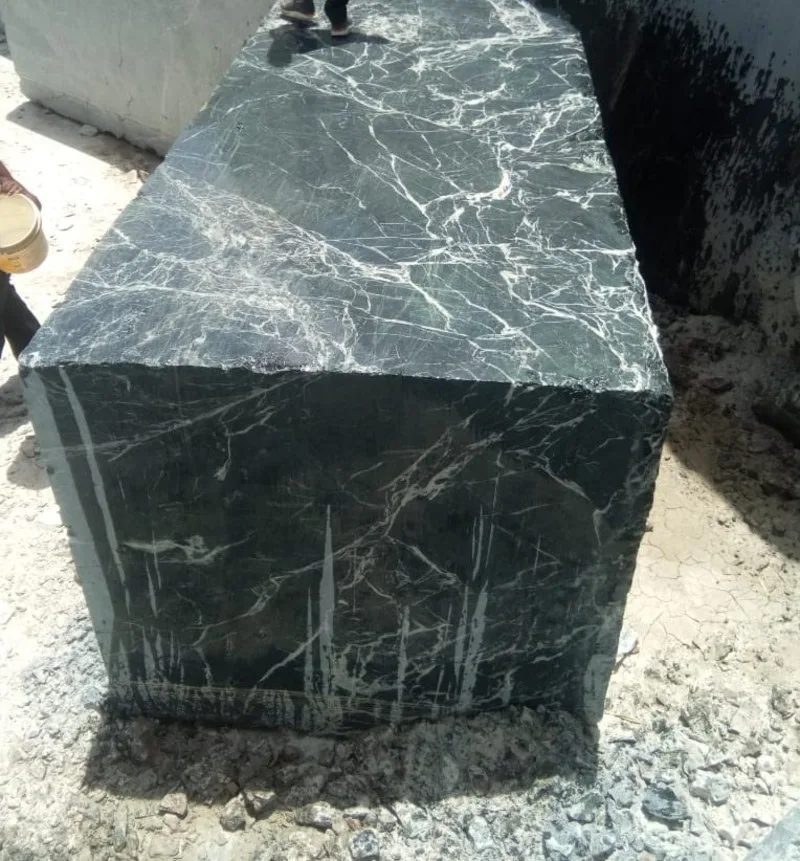
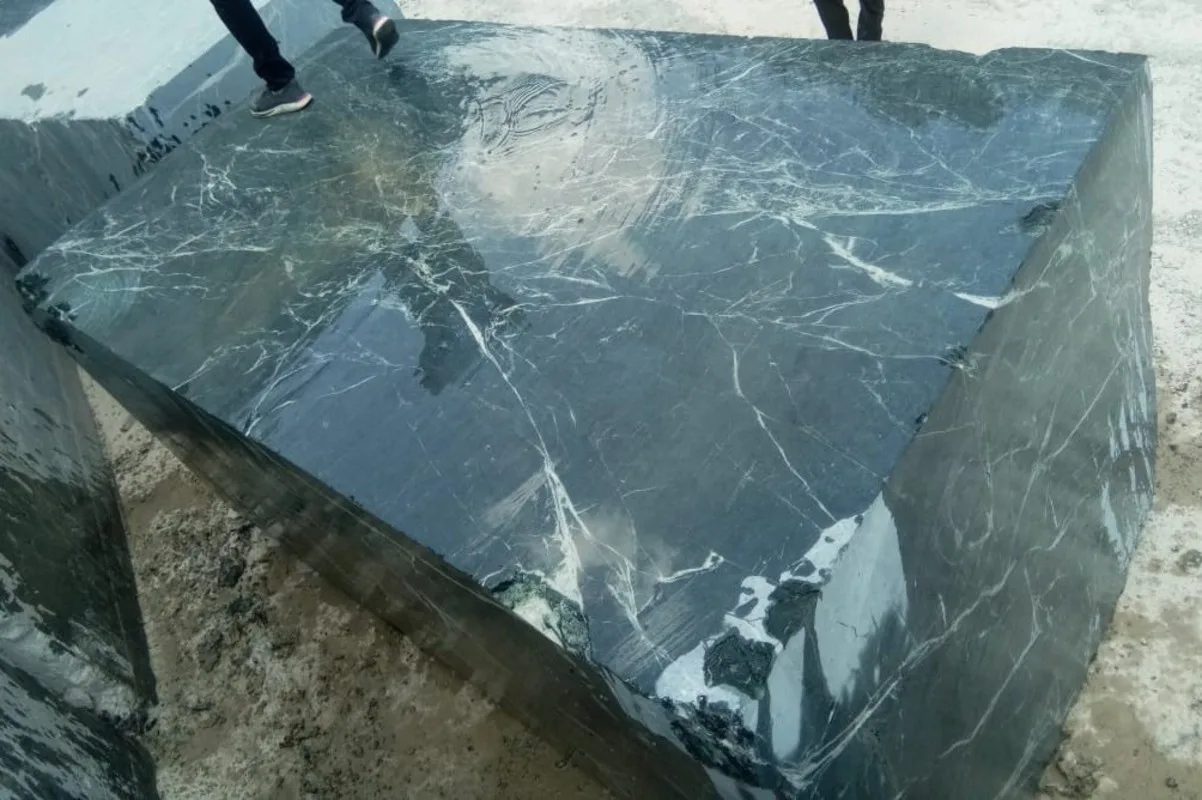

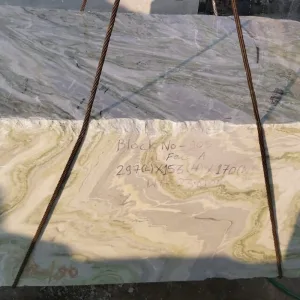
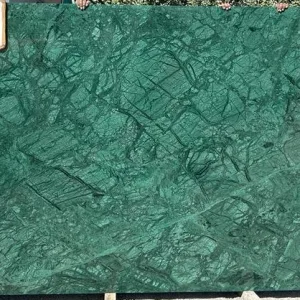
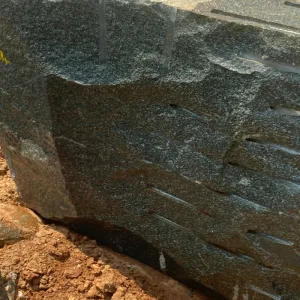
Reviews
There are no reviews yet.